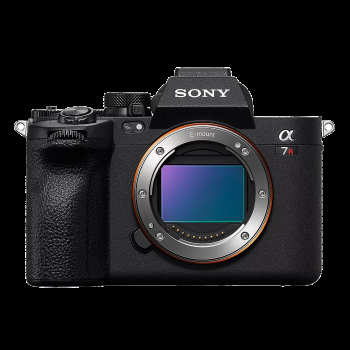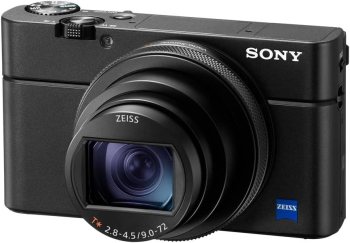- Exceptional image quality
- Robust autofocus
- High-resolution sensor
- Compact and lightweight
- Excellent image quality
- Fast autofocus
- High price point
- Large file sizes
- Complex menu system
- Limited battery life
- Small control buttons
- No headphone jack
Sony Alpha 7R V vs Sony Cyber-shot RX100 VII
When it comes to sony digital cameras, two models that stand out for their exceptional quality and features are the Sony Alpha 7R V and the Sony Cyber-shot RX100 VII. While both cameras are designed to capture stunning images, they cater to different needs and offer distinct advantages.
Sensor Size and Resolution
The Sony Alpha 7R V boasts a full-frame 61.4-megapixel Exmor R CMOS sensor, which provides exceptional detail and dynamic range. This sensor size is ideal for professional photographers who require high-resolution images with excellent low-light performance. In contrast, the Sony Cyber-shot RX100 VII features a 1-inch 20.1-megapixel Exmor RS CMOS sensor, which is still impressive but smaller than the Alpha 7R V's sensor. Although the RX100 VII's sensor is not full-frame, it is still capable of producing excellent images with a wide dynamic range.
Camera Design and Ergonomics
The Sony Alpha 7R V is designed as a mirrorless interchangeable lens camera, offering a more traditional DSLR-like experience. It features a sturdy magnesium alloy body, weather sealing, and a comfortable grip, making it suitable for extended shooting sessions. The camera also has a vari-angle LCD touchscreen and a high-resolution electronic viewfinder.
On the other hand, the Sony Cyber-shot RX100 VII is a compact point-and-shoot camera that measures just 4 inches wide and 2.3 inches tall. Despite its small size, the RX100 VII features a pop-up electronic viewfinder, a tilting LCD screen, and a robust build quality. The camera's compact design makes it perfect for travel, street photography, or everyday carry.
Lens System
The Sony Alpha 7R V has a lens mount that accepts a wide range of E-mount lenses, including Sony's own G Master series and third-party options from manufacturers like Zeiss and Tamron. This flexibility allows photographers to choose the best lens for their specific needs, whether it's a wide-angle zoom or a telephoto prime.
In contrast, the Sony Cyber-shot RX100 VII features a fixed 24-200mm (equivalent) f/1.8-2.8 lens, which is designed to cover a broad range of focal lengths while maintaining excellent optical quality. While the lens is not interchangeable, it is incredibly versatile and suitable for a variety of shooting situations, from portraits to landscapes.
Autofocus and Burst Mode
Both cameras feature advanced autofocus systems, but the Sony Alpha 7R V has a more sophisticated system with 759 phase-detection points, covering approximately 93% of the image area. This allows for fast and accurate subject tracking, even in challenging lighting conditions. The camera also offers up to 10 fps burst shooting with continuous AF.
The Sony Cyber-shot RX100 VII has a fast hybrid autofocus system with 357 phase-detection points, which provides quick and reliable focusing performance. The camera can shoot at up to 20 fps with continuous AF, making it well-suited for capturing fast-moving subjects like wildlife or sports.
Video Capabilities
Both cameras are capable of recording high-quality video, but the Sony Alpha 7R V has more advanced features, including 8K resolution at 30p, 4K at 120p, and 10-bit 4:2:2 color. The camera also supports S-Log3 and HLG (Hybrid Log-Gamma) for greater flexibility in post-production.
The Sony Cyber-shot RX100 VII can record 4K video at up to 120p, with support for S-Log2 and HLG. While it may not match the Alpha 7R V's video capabilities, the RX100 VII is still an excellent choice for vloggers, content creators, or anyone looking for a compact camera that can produce high-quality footage.
Conclusion
In conclusion, when comparing the Sony Alpha 7R V and the Sony Cyber-shot RX100 VII, it's clear that both cameras are exceptional representatives of sony digital cameras. The Alpha 7R V is designed for professional photographers who require high-resolution images, advanced autofocus, and excellent low-light performance. On the other hand, the RX100 VII is a compact and versatile point-and-shoot camera that excels at capturing everyday moments, travel photography, or video content creation.
Ultimately, the choice between these two cameras depends on your specific needs and preferences. If you're looking for a high-end mirrorless camera with exceptional image quality and advanced features, the Sony Alpha 7R V is an excellent choice. However, if you prefer a compact and feature-rich point-and-shoot camera that can fit in your pocket, the Sony Cyber-shot RX100 VII is an outstanding option.































